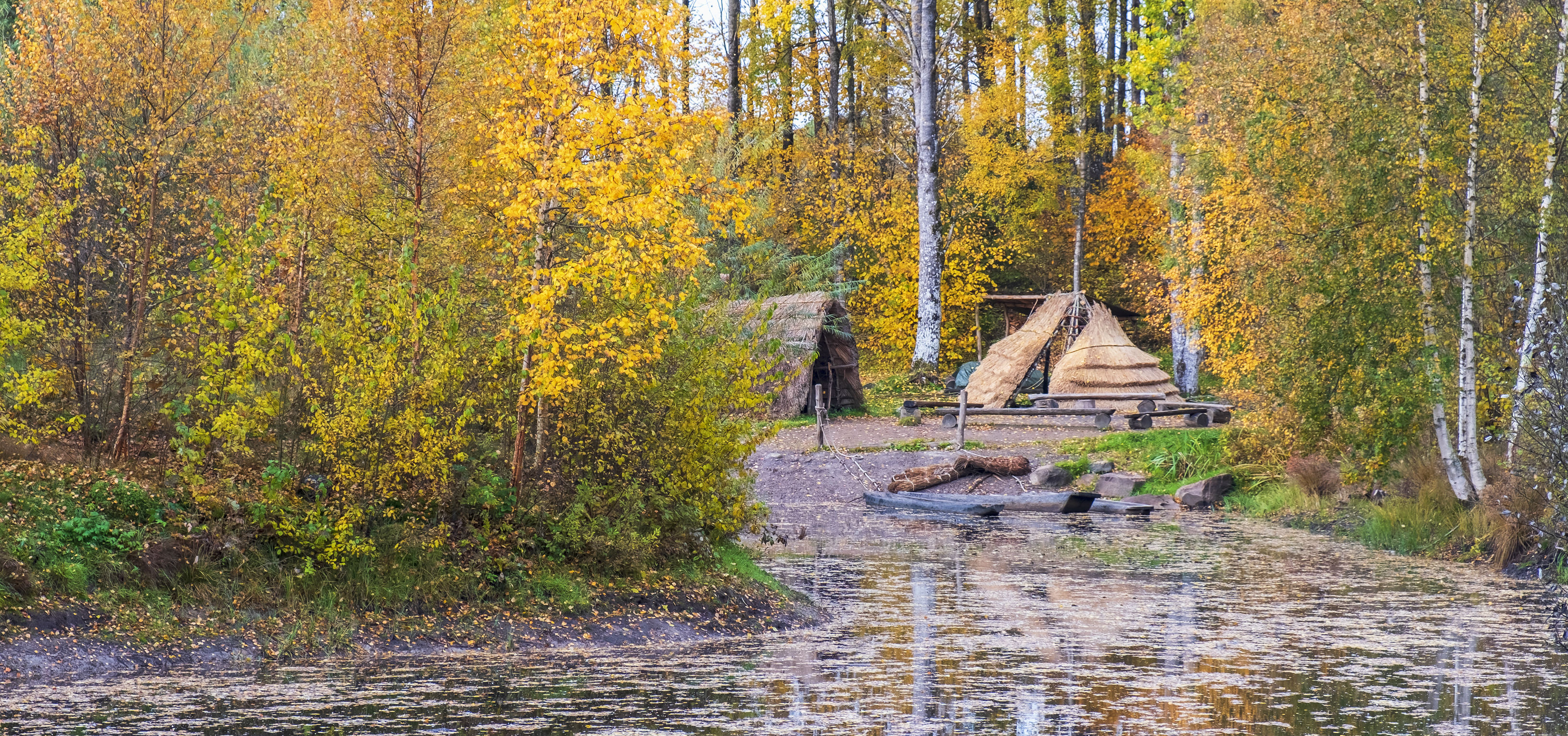Here, Stone Age peoples eked out a meagre living from the terrestrial and aquatic resources available.
However, about 8,500 years ago, a widespread change in climate breathed new life into coastal waters, allowing nutrient-rich, highly oxygenated seawater from the North Sea to flood southern Scandinavian fjords and coasts.
Over time this warming led to an abundance of new aquatic resources – fish, birds, marine mammals and molluscs – that fuelled a boom in human population in the region over the next three millennia.
The phenomenon happened to coincide with the advent of agriculture across Europe, a revolution which drove larger, more complex societies to emerge across other parts of the world in its wake, but was only taken up around 5,900 years ago in Denmark.
A new paper, published in Nature Communications, shows that the wealth of seafood allowed Stone Age Scandinavian tribes to flourish at a similar rate while retaining their hunter-gatherer philosophy and without having to adopt the new agricultural techniques being practised elsewhere.
 Ancient rock paintings in Naesaaker ins Sweden (GETTY)
Ancient rock paintings in Naesaaker ins Sweden (GETTY)
Dr Dave Ryves, Dr Jon Lewis and Professor John Anderson, of Loughborough University, also described the parallels with changes in modern-day climate – especially in regions geographically similar to Mesolithic southern Scandinavia.
Dr Ryves, from Geography and Environment, said: “This study makes new and important contributions to archaeological debates including the development of small-scale communities into larger, more complex societies, the drivers behind population growth, delayed emergence of agriculture and long-term human-environment interactions.
“It also contributes to our understanding of key issues in global environmental change.
“For example, it demonstrates important linkages between sea level, climate, marine production and resource availability in the past that are of relevance for managing coastal resources for societies today and in the future.
“Many coastal regions globally are become warmer and more productive under increasing human impact, with terrestrial nutrients from intensively-farmed regions being carried by rivers into the sea.
“The challenge will lie in our ability to manage these rapidly changing ecosystems responsibly to enable future generations to benefit from them as our distant ancestors did.”
The Holocene Thermal Maximum
The paper shows two periods of rapid population growth in response to a climactic phase known as the Holocene Thermal Maximum – which began about 8,000 years ago – when temperatures in Europe, North America and the Atlantic region rose by about 2.5 ºC.
The first increase in population happened between 7,600 and 7,100 years ago and the second between 6,400 and 5,900 years ago.
By this time, sea levels had increased in temperature and had risen, flooding the land bridge between Denmark and Sweden.
This brought new water from the north with higher salt and nutrient levels, which allowed the marine ecosystem around southern Sweden, Jutland and the Danish Isles to flourish, increasing the number and variety of shellfish, fish, birds and mammals.
The natural environment in southern Scandinavia – with slow-flowing rivers and micro-tidal, low-energy shallow conditions – meant that fishing and harvesting the waters was far easier than in other parts of the world.
Agricultural revolution delay
The ‘cost-effectiveness’ of these huge amounts of aquatic resources meant that the first agricultural revolution, which was sweeping across other parts of the world, was delayed in the region by about 500 years.
Dr Ryves said: “The successful exploitation of available natural resources prevented the need for agricultural innovation.
“Whilst the agricultural revolution is important to later population increase in Southern Scandinavia and elsewhere, this study further highlights that under the right circumstances, populations can grow, and societies develop on predominately marine resources.”
 Replica Stone Age (Neolithic) bowl and pottery with seeds (GETTY)
Replica Stone Age (Neolithic) bowl and pottery with seeds (GETTY)
Future global warming impact
The impact of the Holocene Thermal Maximum could also give an insight into the future effects of climate change and global warming, said Dr Ryves.
“Our study also helps us understand some of the key issues surrounding global environmental change that are relevant for the present day and future.
“It demonstrates important links between sea level, climate – particularly temperature – marine production and resource availability.
“The Holocene Thermal Maximum may provide a key analogue for changes in marine productivity expected under future global warming and rising sea levels – increasing exchange of oceanic water – exacerbated by major terrestrial exports of nutrients to coasts worldwide with implications for coastal resource availability for modern societies.”
Archaeology 2.0
During the research, Dr Ryves, Dr Lewis and Prof Anderson were joined by colleagues from the National Museum of Denmark, Aarhus University, Queen’s University Belfast, University of Nottingham and Newcastle University.
The paper included experts from wide-ranging scientific backgrounds including geography, physics and astronomy, environmental archaeology and materials science, the natural and built environment, earth science, politics and sociology.
Dr Ryves said that the diverse multidisciplinary nature of the research gives classic archaeology new information about ‘grand archaeological challenges’, such as the development of small-scale communities into larger, more complex societies.
It also answers questions about the drivers behind population growth, delayed emergence of agriculture and long-term human-environment interactions.
He added: “This research provided a wonderful opportunity to connect the all-too-often separated disciplines of archaeology and palaeoenvironmental science, in an exciting collaborative project.
“Palaeoenvironmental science and archaeology have much to learn from each other and, together, this type of collaborative research can move both fields forward and make new insights into key questions, that are also relevant for modern societies.”
ENDS
